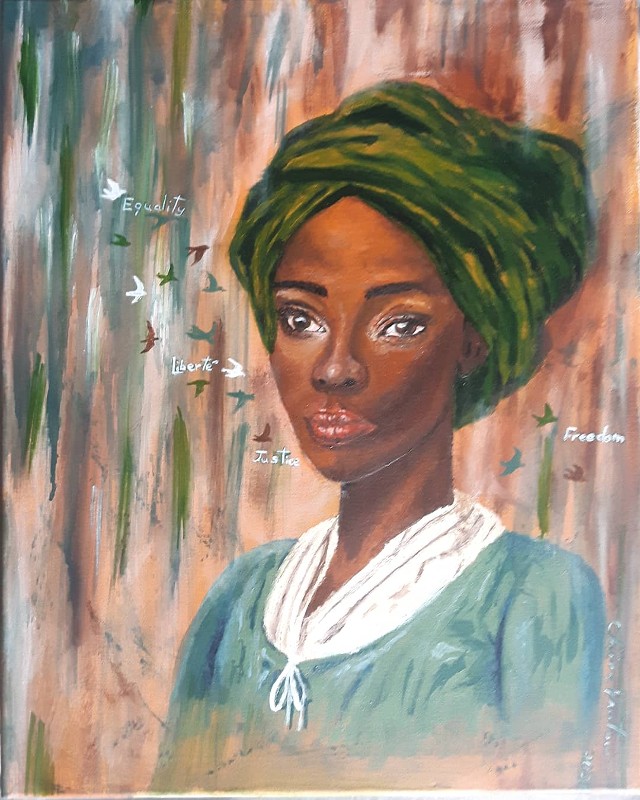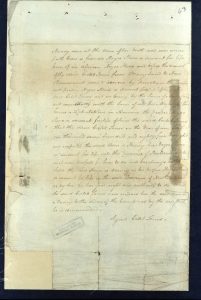Nancy’s Story
“Am I not a woman and a sister?”
– The Liberator, Boston, February 4, 1832
Nancy’s story began in 1786, when she ran away from her Loyalist enslaver, Caleb Jones. The July 25th weekly issue of The Royal Gazette and New Brunswick Advertiser carried vast tidbits of shipping news, as well as Royal Proclamations, editorials, and gleanings from the ports of London, Boston, and Halifax. Buried on page three, amongst the various business and property ads, was one particular notice that stood out by nature of bold letters.

Caleb Jones’ Runaway Slave advertisement was published in the Royal Gazette and New Brunswick Advertiser, July 25, 1786.
The notice continued to state that all persons were forbade to harbour any of these persons: “as they shall answer the consequences.” A reward of two guineas each was offered for the return of the men, and six dollars each for the women—to be paid upon delivery to Thomas Jennings at York Point, in the City of Saint John. The notice was signed and dated CALEB JONES, 24th June 1786.
Nancy was subsequently returned to Caleb Jones, and fourteen years later, both she and her enslaver would become lightening rods for the larger issue of the legality of slavery in this province. Defended by the flamboyant Samuel Denny Street and the stalwart Ward Chipman, the famous freedom trial of Nancy took place in Fredericton in February of 1800.
During the trial Ward Chipman skillfully pointed out that New Brunswick had never actually legalized slavery, and that the Common Law of England did not recognize the laws of Maryland.
His opponents countered with their argument that since slavery was legal in the British Empire, a provincial law was not necessary. In the end, no judgement was returned because the court became divided. Chief Justice Ludlow and Judge Upham ruled in support of Caleb Jones; while Judge Isaac Allen and Judge Saunders ruled against. With no decision being reached, Nancy was returned to Caleb Jones.
Although Nancy did not gain her freedom, her courage in standing for her own cause resulted in others gaining theirs. Her trial also helped draw public attention to the cruelties of slavery in New Brunswick.
Nancy’s Story (closed captions available in English) – View this video with an English transcript.



